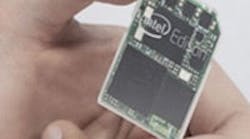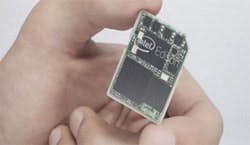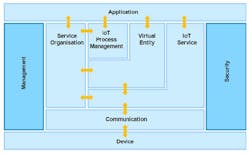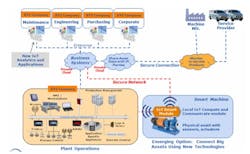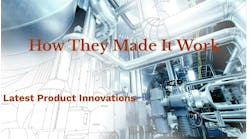Connected Plant: Get Ready for The Internet of Things
March 17, 2014
Even before the ARC Advisory Group 2014 Industry Forum, there was a buzz in the air about connected devices and the implications of the emerging Internet of Things (IoT) on industrial plants and enterprises.
[pullquote]
In his leadoff presentation, Andy Chatha, ARC’s president, dove right into the “connected devices” theme by referring to Amazon's recent announcement that the company is looking into using drones to deliver packages right to its customers' doorsteps. "What is the role of all these connected, intelligent devices in all this, and what does it mean to us in industry and infrastructure?" Chatha asked.
Andy Chatha, ARC’s president
He elaborated on the main components of the Industrial IoT as ARC sees it. These include intelligent devices, products, machines and other assets; a cloud-based infrastructure for data communications and “big data” storage capable of addressing a complex value chain; a combination of descriptive, predictive and prescriptive analytics and software to support asset and system optimization; and, of course, people, processes and systems. According to Chatha, our consumer smartphones represent the ultimate connected devices and now is the time to bring this type of technology to the industrial world. He also made it clear that most of the building blocks for the Industrial IoT are already in place.One potential enabling technology for industrial applications is the Intel Edison IoT Device Development Platform, which was recently introduced at the Consumer Electronics Show (CES). The Intel Edison development board is a tiny, SD-card size, ultra-power-efficient development platform. It can be designed to work with almost any device and will even have its own app store. Chatha noted that every field device could soon incorporate the Edison board and called the audience’s attention to two other interesting announcements that Intel made at CES. First: The company will provide McAfee cyber security software for all mobile devices at no charge. Second: It will offer 3-D software that could use a tablet computer to scan a product to create a 3-D virtual model that could be used to print the product on a 3-D printer. While compelling, this clearly will introduce a whole new set of ramifications for patent protection that will need to be addressed. Intel Edison IoT Device Development Platform
Significant HurdlesChatha highlighted that there are significant challenges to overcome before the IoT will become widely employed on the plant or factory floor or in other industrial applications.Cyber security is the biggest of these challenges, because the Industrial IoT is so dependent on both the public Internet and private intranets. Lack of technology standardization is another hurdle that must be overcome, as is intellectual property ownership. Social and political concerns abound, including privacy issues, such as those related to connected cars that know where the owners are at any time. And complexity-related issues will expand exponentially as the number of devices connected to a system increase over time.“It is going to take a long time to figure the right level of use for this technology,” said Chatha. “I think that we have found the challenge of the century and the puzzle will be how to connect everything together without destroying the planet. It will be interesting to watch how we take the first steps over the next few years.”Chatha discussed existing and potential new applications in which smart connects products — such as the Fibit Wireless Activity Tracker that tracks steps, distance and calories burned and interfaces with iOS and Android portable devices — could be used to help us all improve our health. “I think we’re going to see a floodgate of wearable devices such as these,” he said, and then added, “But how can connected devices provide the most benefits in the plant?”He then addressed the IoT value propositions for industrial asset owner-operators and technology asset suppliers, stressing that because most industrial companies are both asset owners and either asset or product suppliers, they stand to benefit both ways. Asset Owner Value PropositionFor asset owners, the IoT value proposition falls under three general categories: improved asset performance, lower asset lifecycle costs and a new platform for innovation. Improved PerformanceSmart devices connected through the IoT can help improve plant performance by reducing downtime by helping predict, diagnose, analyze and remediate failures before they can interrupt production or com-promise product quality.Organizations can both share relevant information internally and use it collaborate with suppliers to help solve problems.The Industrial IoT also will enable technology suppliers to collaborate more effectively with technology users to develop better solutions, and help product suppliers collaborate with customers to improve products and do a better job of meeting the customers’ needs. Ultimately, users will pay for actual value received, rather than just paying for products.IoT Architecture Reference Model.
Source: IoT-Architecture Consortium.
The Connected Plant
The Connected PlantTo start discussion of the connected plant, Chatha presented several assumptions:1. Most industrial asset owners/technology users have already installed and use both control systems and plant management applications.2. Most business applications are already in private clouds, and some asset owners/technology users already take advantage of advanced analytics to analyze the data.3. It’s likely that as asset owners move more of their data to the Cloud, they will share appropriate data with their asset and service suppliers, and in this manner, can help asset owners enhance the reliability of their plant or other industrial assets. Based on the above assumptions, Chatha proposed an interesting option: connecting big assets directly to private clouds using a secure plant network. What’s the benefit? First, it can save asset owners a lot of money, because connecting a device to the control system is usually very expensive. By buying a field device with a dual interface (WirelessHART and Wi-Fi), asset owners could make use of either or both interfaces to inexpensively connect to the Cloud and add many more sensors to the big assets, enabling them to predict failures before they happen to improve plant reliability.The Connected PlantChatha believes that with this approach, there’s no need to change systems; asset owners can just add incremental sensing points and smart devices using the dual interface approach for applications such as asset monitoring.“This is not for every plant, but for some it can make sense by helping eliminate downtime, particularly for remote industrial assets such as oil & gas production fields and mines.” Chatha added, “Clearly, the connected asset value chain becomes much more complex, but failures in plants can be big things, particularly if you don’t have a good grasp on what happened.”“We in the industry have an opportunity to lead this revolution since we’re already using many connected devices.”NOTE TO READERS: See a YouTube video on the complete presentation on which this column is based.Paul Miller is Senior Editor/Analyst at ARC Advisory Group, Dedham, Mass., a firm that evaluates technology, analyzes trends and conducts market research. Miller has been a “student of the automation industry” for 30 years, closely following the evolution from yesterday's proprietary, purpose-built control systems to today's more open automation systems, based largely on commercial technologies. At ARC, in addition to his own research, Miller serves as both senior editor and content director for all Advisory Service reports. You can e-mail him at [email protected]
Latest from Wireless Technology
Latest from Wireless Technology
